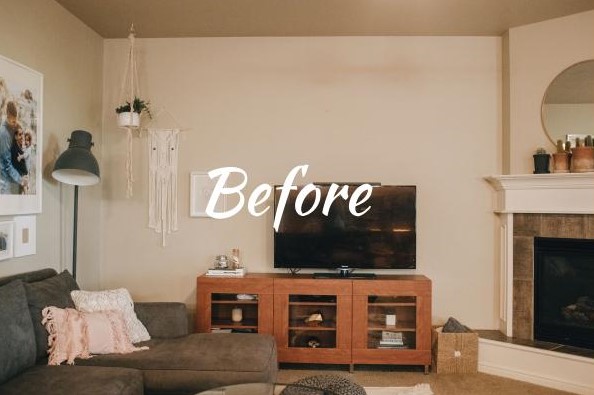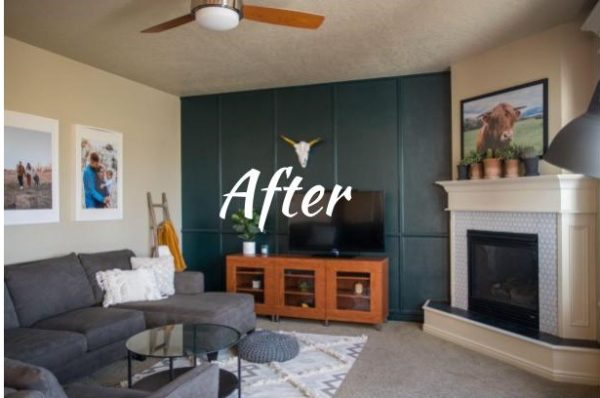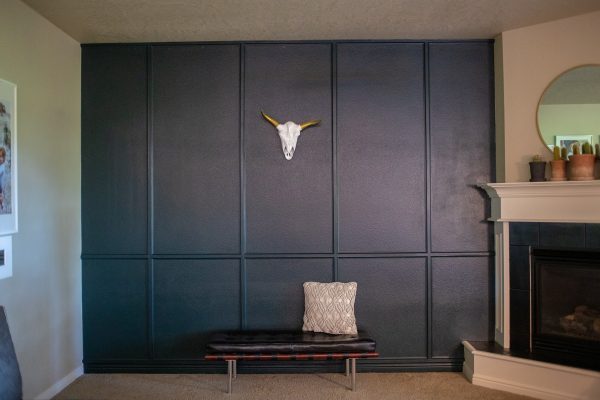DIY Accent Wall: Colonial Corners
Want to give your wall a classy and polished look? This Colonial Corners accent wall is simple, classic and will look great in any room!
Watch our video and follow the steps below!
New to accent walls? Check out our DIY Accent Wall: Quick Start blog post to learn the basics!
Materials:
- Boards: 8 Square, 8 Cove, & 2 Baseboard
- Caulking (2 tubes)
- Caulking gun
- Measuring tape
- Level
- Spackle, joint compound, or wood filler
- Paint (1 gallon)
- Nail gun and finishing nails (2” nails)
- Paper and tape to cover up areas for paint
- Saw to cut moulding
- Paint sprayer or brush and roller
- Sandpaper/Sander (220 Grit)
Profiles: 285 Baseboard / 100 Cove Mould / 239 Square
Use this Green Print as a guide, but feel free to be creative with your design! Note: the size of your wall and the moulding used will affect the placement of the moulding.
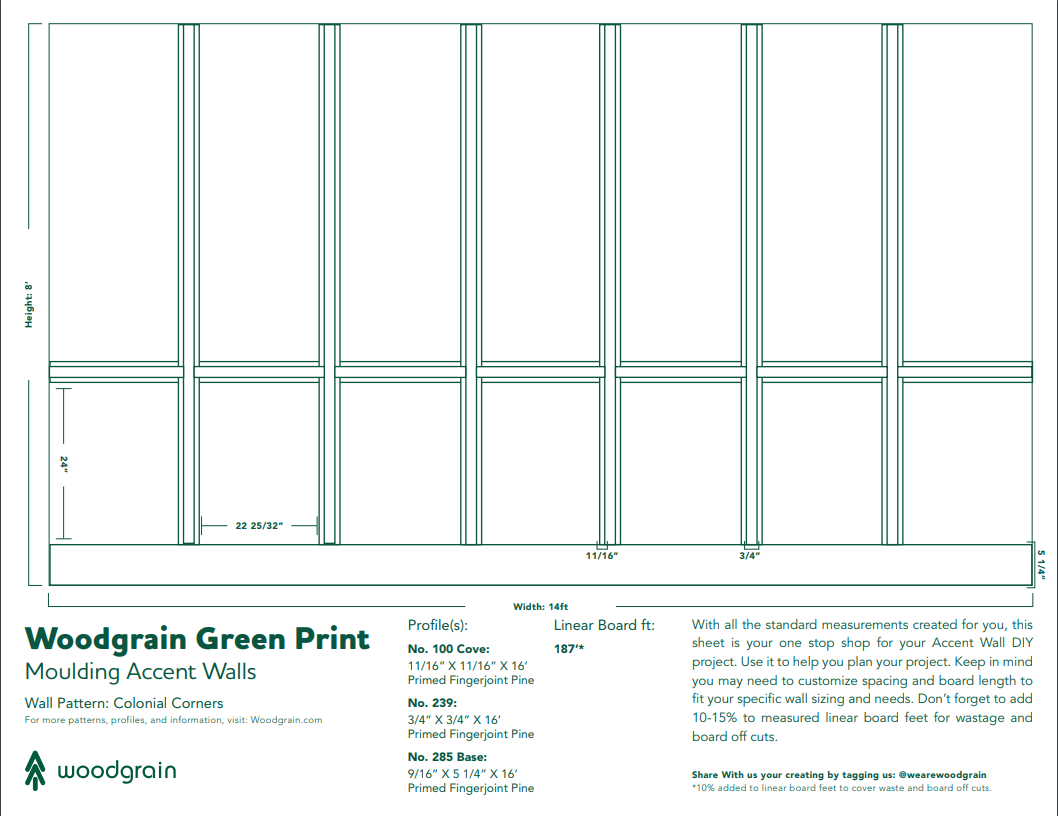
How to install:
Step 1: Choose your wall and moulding
Identify the wall you will be working on and determine the style of moulding that would best fit the space.
Step 2: Measure everything
Measure the wall height and width and make sure you take into consideration outlets, windows and light switches. This will help you get a feel for the board footage needed and where to cut your moulding. We recommend adding 10-15% board feet for wastage and board cuts.
Step 3: Mark it up
Mark the wall where moulding will be placed to get a visual of how the moulding will look. Don’t be afraid to draw on your wall, since you’ll be painting over it anyway. Using a laser level can help you project lines onto your wall.
For this design it is important to have a very box-like appearance. Section off your wall into high rectangles on the upper part of the wall and low rectangles on the bottom.
Step 4: Apply your baseboard
Start by applying your baseboard, as this will help you keep your lines straight.
Step 5: Cut and apply your square moulding
We recommend starting with the vertical boards first, and then cutting and placing the horizontal boards.
Cut your square moulding and use it to create the frame of your design.
Apply the square moulding to the wall by using a nail gun with finishing nails. Make sure these are on straight as they are a guide for the cove profile.
We recommend using 2” nails to secure the moulding profile for long term wear and tear. Keep in mind you’re going to have to finish the moulding with caulking and putty so the fewer nails the better for less work on the finishing process.
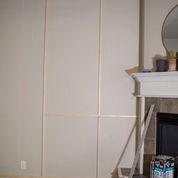
Step 6: Cut and apply your cove moulding
Apply the cove profile on all sides of the square moulding for a textured and elegant look. You are basically using 3 pieces of moulding to create the look of one piece of wood.
Step 7: Fill in the gaps
Caulk all the seams to fill in any gaps and apply putty to all of the nail holes.
Don’t skimp on the caulking here because it is crucial to join the mouldings, and it will give your wall a more finished look.
Pro tip: cut your caulking tip at a 45-degree angle for easier application.
Step 8: Sand it
Sanding helps blend the cove and square profiles together for a more completed look.
Step 9: Paint your wall
If using a paint sprayer, keep 1.5- to 2” of space between you and the wall for consistent application. Be sure to apply paint in the corners and the underside of moulding profiles.
If painting by hand, pay extra attention to the bottom sides of mouldings and corners where mouldings meet.
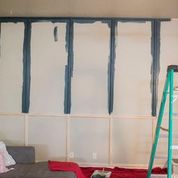
Step 10: Enjoy your beautiful Colonial Corners accent wall!
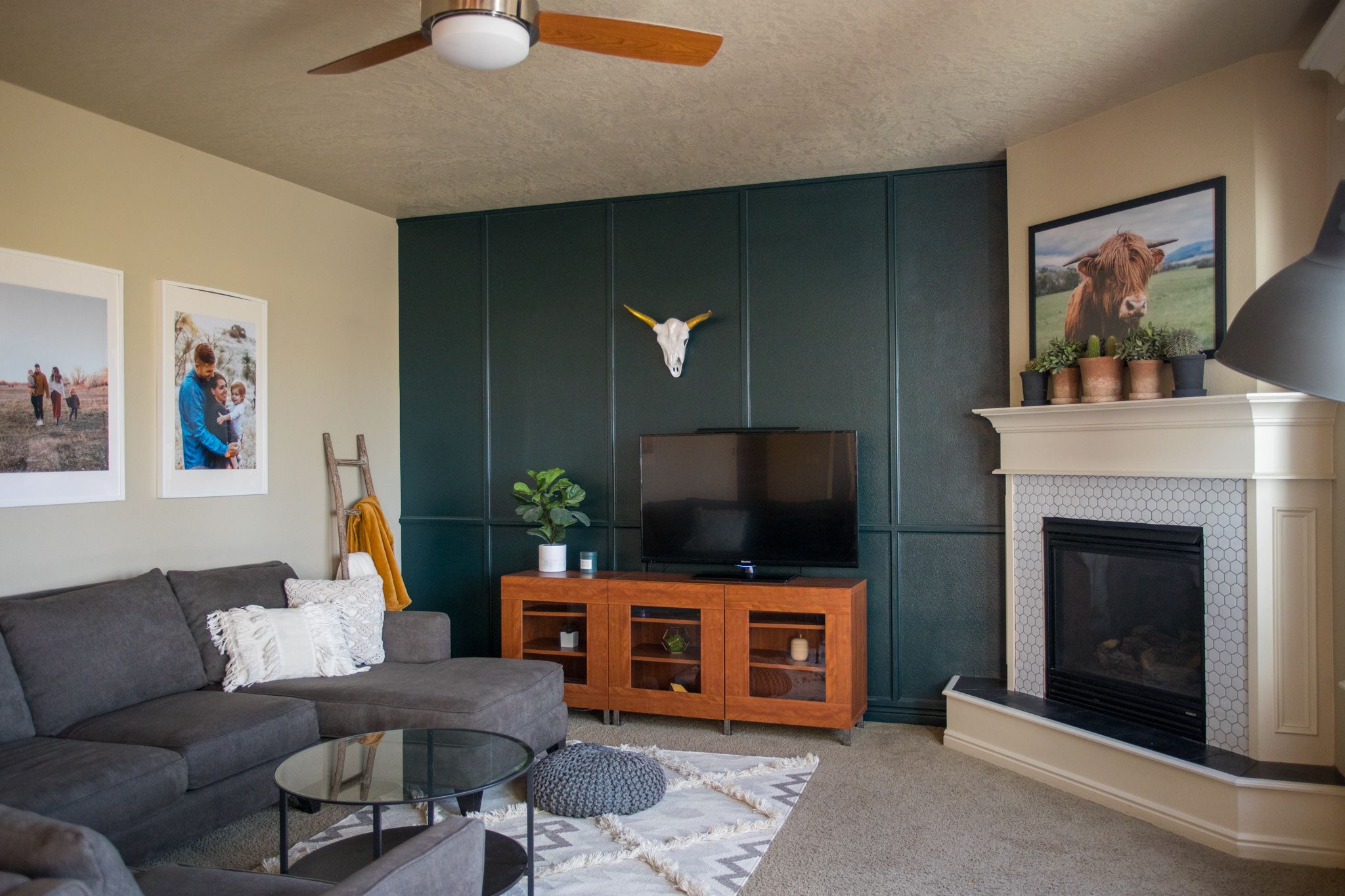
Photos: Colonial Corners Accent Wall on 12 x 8 foot wall
Helpful tips when creating an accent wall
- Choose a balanced, unobstructed wall that stands out.
- Choose rooms or spaces where you want to make an impact. Bedrooms, living rooms and entryways are great spaces to create a custom look. Select spaces where guests will see it, or where you spend a good amount of your time.
- Bold colors really make a statement. Dark greens, grey, black and blue are currently in.
- White accent walls make a statement without being too bold.
- Try to pick a style of accent wall that complements the look of your home and room; just because you like a modern style wall doesn’t mean it’s the best pick for a colonial style room.
- Go in with a plan and draw out your design before beginning.
- Find 2-3 moulding profiles that you think will achieve the look you’re going for. Then, take each sample and place it on the wall to see which you like the best.
- Create a jig if you have to repeat a cut. This will save time and help with consistency.
- Use hot glue to apply moulding first so that you can adjust the moulding if needed. Then use finishing nails to secure the moulding.
- Rent a nail gun, use your own or use an adhesive.
- Once everything is in place, apply more nails to ensure it is long lasting.
- Use putty to the nail holes rather than caulking for a better finish.
- If using a paint sprayer, keep 1.5 to 2” of space between you and the wall for an even application.
- Take your time in the finishing stage. The little details when you finish will make the wall look more polished.
- We estimate that creating an accent on a 12′ x 8′ wall can cost around $200. This includes paint, moulding, tool rentals and other materials. You can save money by using tools from your home or borrowing from friends.
What do you think of the Colonial Corners accent wall? Let us know in the comments below and tag us in your pictures on Instagram, Pinterest and Facebook!
